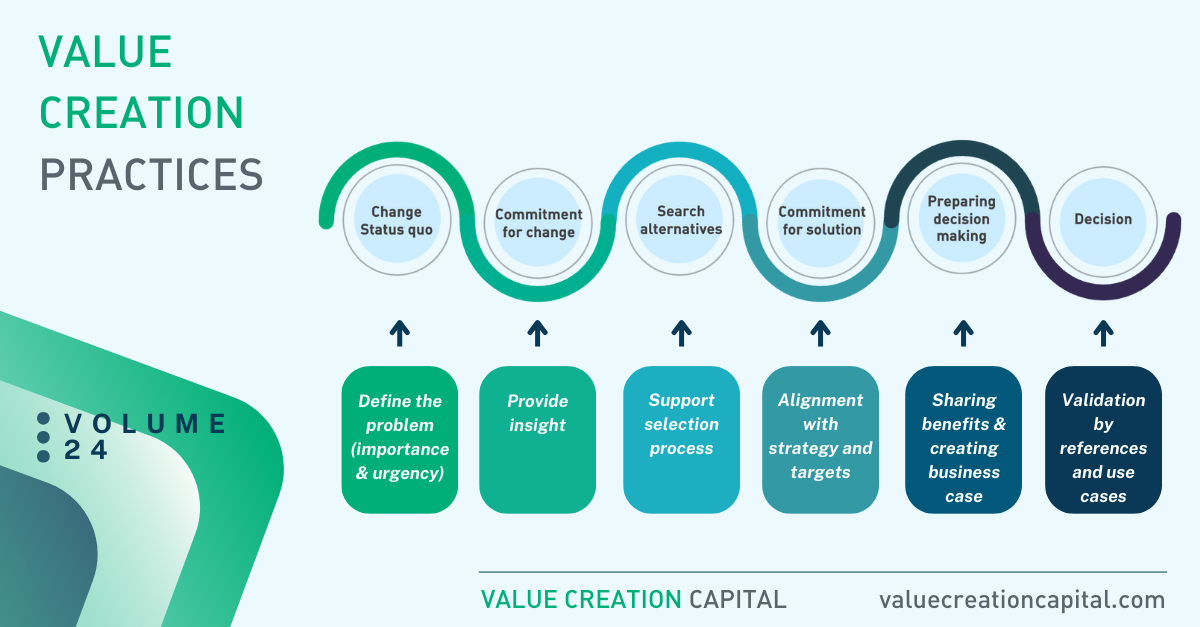Buy and Sales Process

New technology is changing the buying process. One of the consequences is that a substantial amount of customers find sellers before sellers find the customer. Through websites and consulting services, customers have multiple resources to identify, screen, and select vendors without contacting them and often reject sellers before the sellers even know they have been screened out. This is a significant change in how buyers buy and requires an equally significant change in how sellers sell.
Changes in the buying process are creating fundamental changes in the sales process. In the past, the sales process was the driver of the interaction between the customer and the seller. Salespeople prospected for new customers, led the identification of needs and requirements, proposed solutions, and closed a sale.
Today, it is the buyer who is in charge of the speed and direction of the sale.
So, how to influence the buying process to be more in control?
In the previous post, we have provided an example of a typical B2B buying process. To become more effective in your way of selling, you need to influence each step of that buying process. Let me give you some examples:
1. Define the problem
In some cases, the problem is somewhat hidden. You first task is to define clearly the problem. In addition, highlight the importance and/ urgency of that problem to be able to change the status quo of the buyer.
2. Provide insight
Provide your prospects insight in the benefits of the proposed change. And how to reduce the involved risks. To support commitment of the buyer for the proposed change.
3. Support Selection Process
In any B2B buying process, decision makers will ask for alternatives. In order to become the preferred solution, you have to address your uniqueness or at least your competitive advantages compared to alternatives. These alternatives or not just your direct competitors but could also be more generic competitors.
4. Alignment with strategy and Targets
You can increase the importance of your offering to align this with the strategy, a strategic project and/or targets (KPIs) of your prospect. This alignment is in most cases also pre-conditional for the buyer in applying for budget for the purchase/investment.
5. Sharing Benefits & Creating Business Case
Sharing the tangible benefits of your offering is probably not enough anymore. In most bigger companies, it is required to have a solid business case for decision-making. Supporting your prospect in making the business case is increasing your conversion rate substantially.
6. Validation
Decision-makers like to validate their decision. As a seller you can support this in providing the extended use case but more importantly by providing reference customers.
Check if you are the influencing the buying process of your prospects at maximum by proding content for each stage.